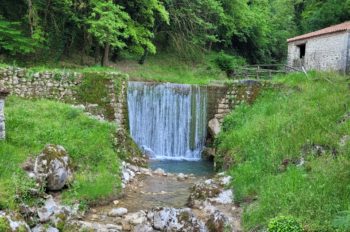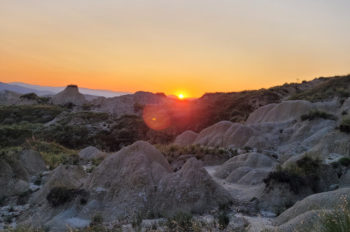Placed in Basilicata, Craco is a ghost town, which we visited last weekend.
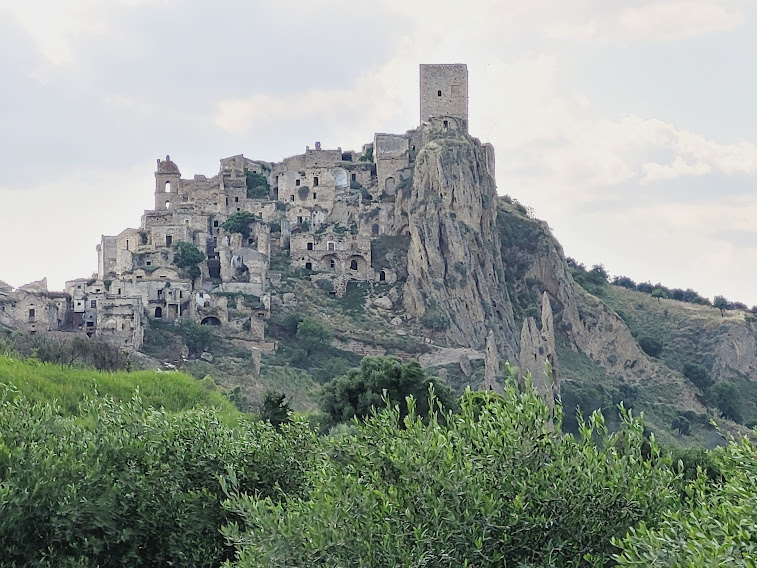
Ghost towns in Italy are nothing unusual actually, as many places in Italy, especially in the South, had already been abandoned or are emptying because of various reasons. Sometimes because of the low birth rate. Sometimes because youngsters move to bigger places looking for jobs/education opportunities, and hardly ever go back to their hometowns, sometimes because of human fault/stupidity, and sometimes because of natural disasters. What happened to Craco is a mixture of two last reasons, but even without these causes, such a small place with time would probably eventually become a ghost town anyway.
Where is Craco.
Craco is just 50 km from the famous rock-town Matera, between the Lucanian Apennines and the Ionian Sea. It stands on the top of a whitish rock hill.

According to the guide, the name ‘Craco’ comes from birds – ravens. Another version is the name coming from the old Germanic word for cracks.
Craco was once famous for wheat production, so the population was farmers, and on top of its time there were 2000 people living there.
The old town was built on solid rock, but the newer parts of it were built on clay. The clay is great for ceramics and other stuff, but it is not necessarily great when it has to be a base of a town.
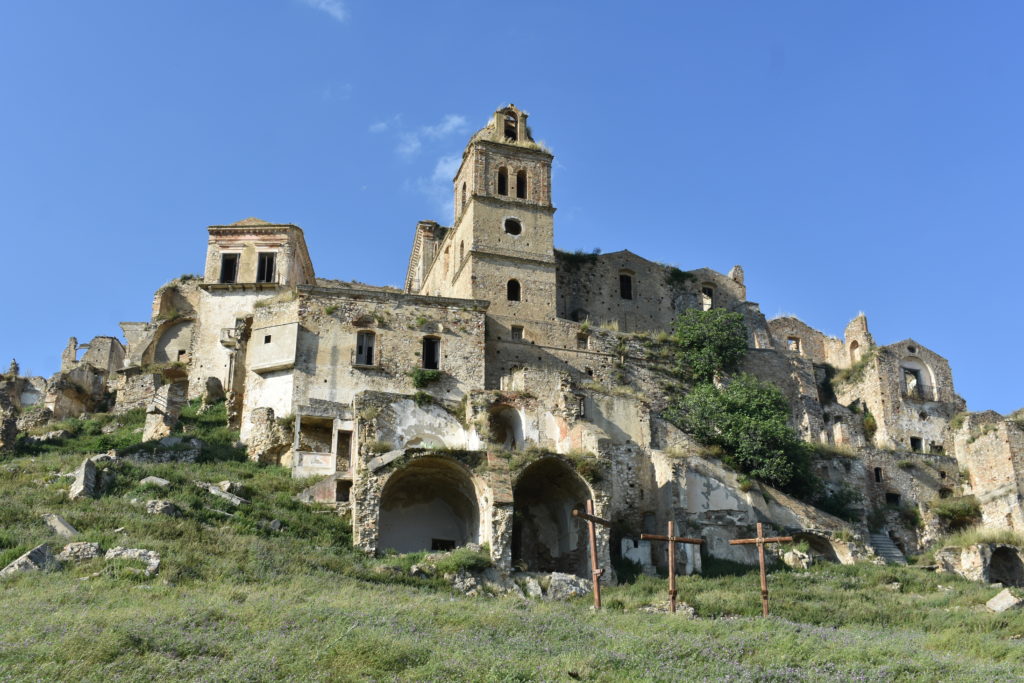
What happened to Craco.
As I mentioned above, part of the town was built on a rock, and the base of the other houses standing under the rock were hills of clay. If the clay is untouched, it probably might be a solid base, however, clay is plastic, become soft, and tend to change shape when treated with water.
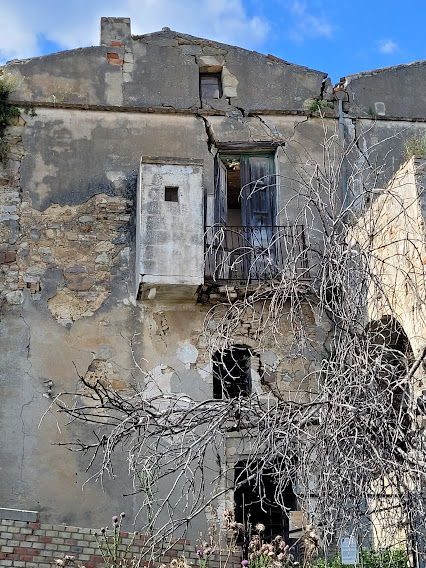
The first documented landslide in Craco was recorded in 1888. Then in 1959 after 5-day long heavy rain happened another landslide, which caused the first cracks in the houses of the town. Between 1963 and 1965 the situation had been worsening, therefore the first houses were evacuated. The last, or rather almost all last inhabitants in 1974 transferred to social houses in Peschiera.
However around 100 people stayed in the old town after evacuation, but after the 1980 Irpinia earthquake also these decided to leave and Craco became a ghost town.

Is Cracao worth visiting?
A guided tour in Craco takes 1 h and costs 11 euro/person, It’s not possible to see the town on your own. There’s also a ticket which costs a bit more, I think 13 euro if I remember well, but with this ticket you can also visit a museum emotional museum.
The till where you can buy tickets is in an old monastery building, which is app. 10 min walk from the entrance to the town (Viva Italian organization!) To find it, just go along the asphalt road.
Wear comfy shoes, as there are many sometimes slippy stairs, you will be given also a helmet. I always carry with me a bottle of water
If you like stories of abandoned towns and if you like ruins, you might find this place interesting. Was it interesting to me? It was okay, but I’ve seen more interesting places. However many people believe Cracao is really beautiful and find it fascinating. Many filmakers have used to shot their movies in Craco. Mel Gibson recorded there his famous “The Passion”.
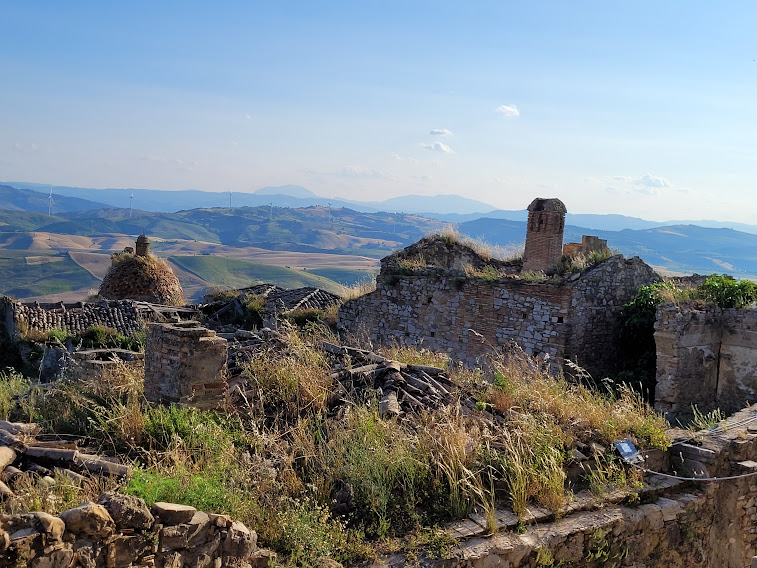
Craco has still some inhabitants, they are donkeys and sheep wandering around the town and enjoying the grass. The museum park of Craco is open from 9 to 20 all day and the tours leave every hour.
What we did in Basilicata, and then in Campania, you can read here.


